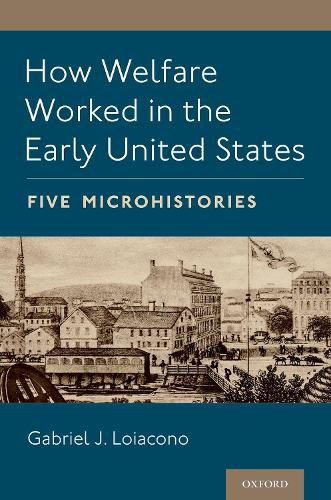Readings Newsletter
Become a Readings Member to make your shopping experience even easier.
Sign in or sign up for free!
You’re not far away from qualifying for FREE standard shipping within Australia
You’ve qualified for FREE standard shipping within Australia
The cart is loading…






What was American welfare like in George Washington’s day? It was expensive, extensive, and run by local governments. Known as poor relief, it included what we would now call welfare and social work. Unlike other aspects of government, poor relief remained consistent in structure between the establishment of the British colonies in the 1600s and the New Deal of the 1930s. In this book, Gabriel J. Loiacono follows the lives of five people in Rhode Island between the Revolutionary War and 1850: a long-serving overseer of the poor, a Continental Army veteran who was repeatedly banished from town, a nurse who was paid by the government to care for the poor, an unwed mother who cared for the elderly, and a paralyzed young man who attempted to become a Christian missionary from inside of a poorhouse. Of Native, African, and English descent, these five Rhode Islanders utilized poor relief in various ways. Tracing their involvement with these programs, Loiacono explains the importance of welfare through the first few generations of United States history. In Washington’s day, poor relief was both generous and controlling. Two centuries ago, Americans paid for–and many relied on–an astonishing governmental system that provided food, housing, and medical care to those in need. This poor relief system also shaped American households and dictated where Americans could live and work. Recent generations have assumed that welfare is a new development in the United States. This book shows how old welfare is in the United States of America through five little-known, but compelling, life stories.
$9.00 standard shipping within Australia
FREE standard shipping within Australia for orders over $100.00
Express & International shipping calculated at checkout
What was American welfare like in George Washington’s day? It was expensive, extensive, and run by local governments. Known as poor relief, it included what we would now call welfare and social work. Unlike other aspects of government, poor relief remained consistent in structure between the establishment of the British colonies in the 1600s and the New Deal of the 1930s. In this book, Gabriel J. Loiacono follows the lives of five people in Rhode Island between the Revolutionary War and 1850: a long-serving overseer of the poor, a Continental Army veteran who was repeatedly banished from town, a nurse who was paid by the government to care for the poor, an unwed mother who cared for the elderly, and a paralyzed young man who attempted to become a Christian missionary from inside of a poorhouse. Of Native, African, and English descent, these five Rhode Islanders utilized poor relief in various ways. Tracing their involvement with these programs, Loiacono explains the importance of welfare through the first few generations of United States history. In Washington’s day, poor relief was both generous and controlling. Two centuries ago, Americans paid for–and many relied on–an astonishing governmental system that provided food, housing, and medical care to those in need. This poor relief system also shaped American households and dictated where Americans could live and work. Recent generations have assumed that welfare is a new development in the United States. This book shows how old welfare is in the United States of America through five little-known, but compelling, life stories.